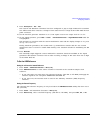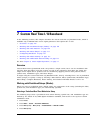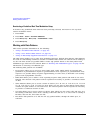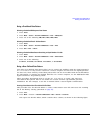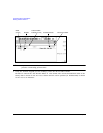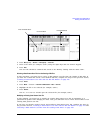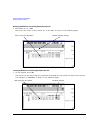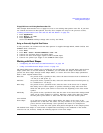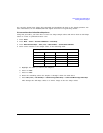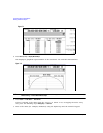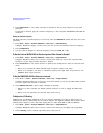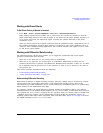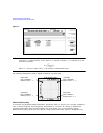
Chapter 7 171
Custom Real Time I/Q Baseband
Working with Burst Shapes
To Apply Bit Errors to an Existing Data Pattern User File
This example demonstrates how to apply bit errors to an existing data pattern user file. If you have
not created and stored a data pattern user file, first complete the steps in the previous section,
“Creating a Data Pattern User File with the Bit File Editor” on page 167.
1. Press
Apply Bit Errors.
2. Press
Bit Errors > 5 > Enter.
3. Press
Apply Bit Errors.
Notice both Bit Errors softkeys change value as they are linked.
Using an Externally Supplied Data Pattern
In this procedure, an external real time data pattern is supplied through DATA, DATA CLOCK, and
SYMBOL SYNC connectors.
1. Press
Preset.
2. Press
Mode > Custom > Real Time I/Q Baseband > Data > Ext.
3. Connect the real-time data to the DATA input.
4. Connect the data clock trigger signal to DATA CLOCK input.
5. Connect the symbol sync trigger to the SYMBOL SYNC input.
Working with Burst Shapes
• “Configuring the Burst Rise and Fall Parameters” on page 172
• “Using User-Defined Burst Shape Curves” on page 172
The Burst Shape menu enables you to modify the rise and fall time, rise and fall delay, and the burst
shape (either sine or user file defined). In addition, you can define the shape of the burst and
preview the burst shape through a Rise Shape Editor, or restore all of the burst shape parameters
back to their original default state.
Rise time the period of time, specified in bits, where the burst increases from a minimum of
−70 dB (0) to full power (1).
Fall time the period of time, specified in bits, where the burst decreases from full power (1)
to a minimum of −70 dB (0).
Rise delay the period of time, specified in bits, that the start of the burst rise is delayed.
Rise delay can be either negative or positive. Entering a delay other than zero
shifts the full power point earlier or later than the beginning of the first useful
symbol.
Fall delay the period of time, specified in bits, that the start of the burst fall is delayed. Fall
delay can be either negative or positive. Entering a delay other than zero shifts
the full power point earlier or later than the end of the last useful symbol.
User-defined
burst shape up to 256 user-entered values, which define the shape of the curve in the
specified rise or fall time. The values can vary between 0 (no power) and 1 (full
power) and are scaled linearly. Once specified, the values are resampled as
necessary to create the cubic spline that passes through all of the sample points.
The default burst shape of each format is implemented according to the standards of the format
selected. You can, however, modify the following aspects of the burst shape:



